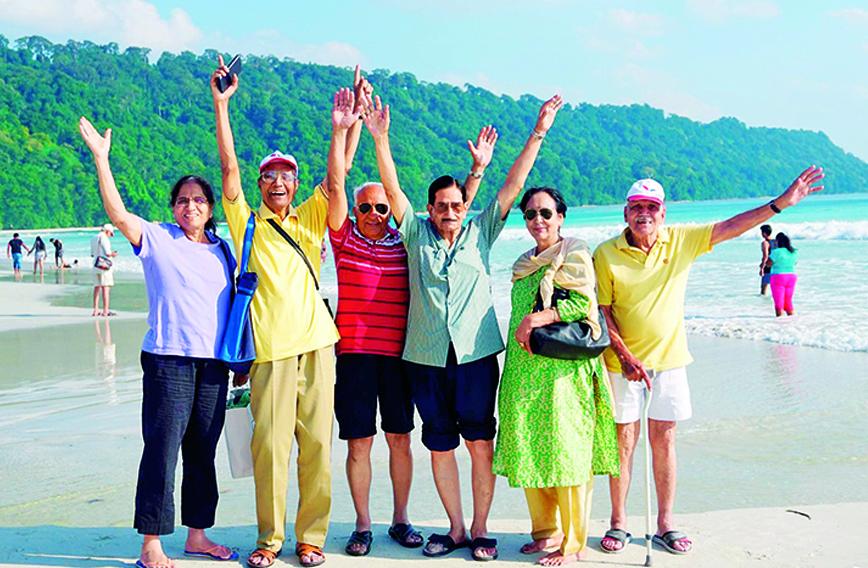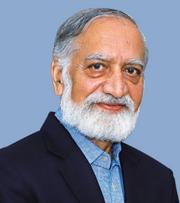

KIRAN KARNIK
ARE you free? This oft-asked question is prone to multiple interpretations. Human rights activists will understand it in the context of larger freedoms; managers in offices will assume it means availability to speak, or to do something; others may have different answers, depending on context and questioner. To most, the colloquial understanding of the question has to do with the most common scarce resource: time.
Despite increasingly long workdays for many, the advent of technology in the workplace as well as the home should translate to a greater amount of free time. Why this is not already happening is a bit of a mystery. Yet, sooner rather than later, use of enabling technologies will save time and create more “free time”. In fact, many worry that as machines take over, humans may have prosperity, but no work; the resulting idleness will have its own ramifications.
Desirable or not, that is a distant future. In the more immediate years (probably in this decade; certainly, in the next), we are unlikely to be completely idle, but will have more free time. This will be enhanced for gig workers (those working according to their desire and need), who can take time off whenever they want. This, along with growing incomes, will make leisure one of the biggest sectors of any economy. Today, advanced economies are marked by low agriculture-to-GDP and high services-to-GDP ratios. In a few years, their main identifier will be the proportion of leisure expenditure in the GDP.
Another major driver of the leisure economy will be rapidly aging populations. In India, we will have about 225 million elders — the 60-plus — in 10 years, growing to about 350 million in 2050. Having earned high incomes and amassed large savings, a large number of them — retired but, thanks to health-tech, yet in good health — will be enjoying almost full-time leisure, with their money and fitness enabling them to do practically whatever they please.
One can safely predict a booming leisure sector, feeding on a combination of growing disposable income with the young, their ability (thanks to increased gig work) to take a break when they want, heightened awareness to balance work and “life”, elders with large savings and in good health, plus the wants created by marketing and peer pressure. Already, the choice of leisure activities has multiplied. Travel is an old favourite, but new destinations (especially abroad) are emerging. Curated and specialized journeys are also growing, including adventure trips, food tours, thematic circuits, village stays, safari and back-to-nature sojourns.
Also becoming popular are alternatives, earlier rare for Indians, such as cruises, single-women tours, staycations, and fitness or health holidays. Experiential breaks, like rural immersion trips, are also in demand. The extent and scale of travel for MICE (marketing, incentives, conferences, and exhibitions) is already large and seeing further growth. These large-group outings now fill up hotels and airline seats at all times of the year. Destination weddings (especially in tourist or exotic locations) do the same, though this is seasonal.
Looking ahead, one can see a boom in all these; and this is but one component of the leisure and culture industry. Movies have long been popular and — despite some prognostications — have survived, first television and now “OTT” or streaming channels. In fact, box-office collections are reaching record levels. Gaming — including for-stakes games — is gaining popularity in India (globally it rakes in greater revenue than the movie industry). On-ground, “live” events, which many thought were dying with the advent of new technologies, are not just surviving but attracting large crowds. Theatre and live performances — music, dance, even stand-up comedy — often attract audiences like a popular movie. While television offers a far better view of sports — with high-tech and drone-mounted cameras from multiple angles — many yet prefer to go in person. In either case, it is a lucrative cash-generator. The mind-boggling figures for buying broadcast rights for cricket is an indicator, as is the black-market rate for tickets of the India-Pakistan World Cup match. Economist Dr Madan Sabnavis estimates the World Cup-induced consumer spending to be a whopping Rs 18,000 crore to Rs 22,000 crore.
In this sector, new (often tech-enabled) possibilities and demand are in a mutually reinforcing upward spiral, fuelled by the combination of the factors mentioned. Leisure or free time is now also being used for learning music, dance, yoga, painting, cooking, and much else. Some learn languages, and a few (adults/elders) even go back to learning maths or physics! “Working out” and making time for it has become an almost compulsory leisure activity now amongst youth. A visible sign is the proliferation of gymnasia in every city of the country. Their fees are not trivial and gym owners — though not yet as popular a vocation as owning a restaurant — are laughing all the way to the bank. While exercise, including yoga, is generally considered part of the health and fitness sector, it is a free time or leisure activity.
In coming years, the big target for this sector will be the comparatively untapped and very rapidly expanding category of elders. While a very large and exponentially-growing number of them can afford expensive leisure time activities, a high proportion is poor, though destitution and abject poverty will (hopefully) end. It is for the family and community, with help from NGOs and government, to ensure that poor elders too enjoy their leisure time. Rich or poor, elders have a need for social interaction and emotional support: engaging use of their free time is an excellent way of doing this.
Many talk of attention as being the most important element in future, with companies competing intensely for consumer attention. However, for aeons, humans’ biggest asset has been time: a limited, depleting, non-renewable resource. Leisure time is even scarcer, though it will increase in future. Remember this when next asked: Are you free?
Kiran Karnik is a public policy analyst and author. His most recent book is ‘Decisive Decade: India 2030, Gazelle or Hippo’
Comments
Currently there are no Comments. Be first to write a comment!



